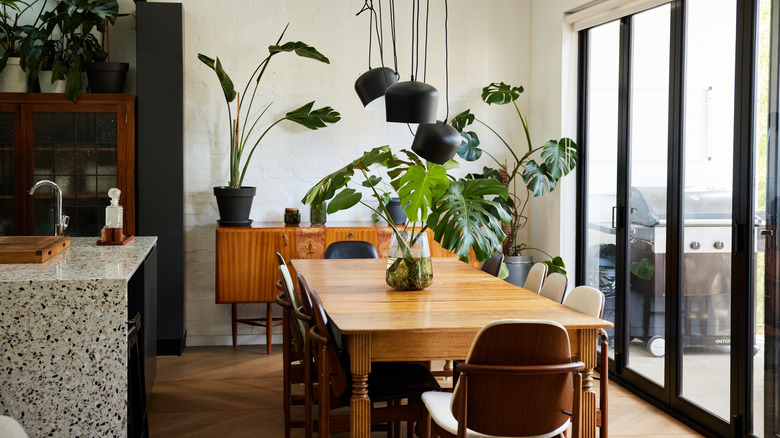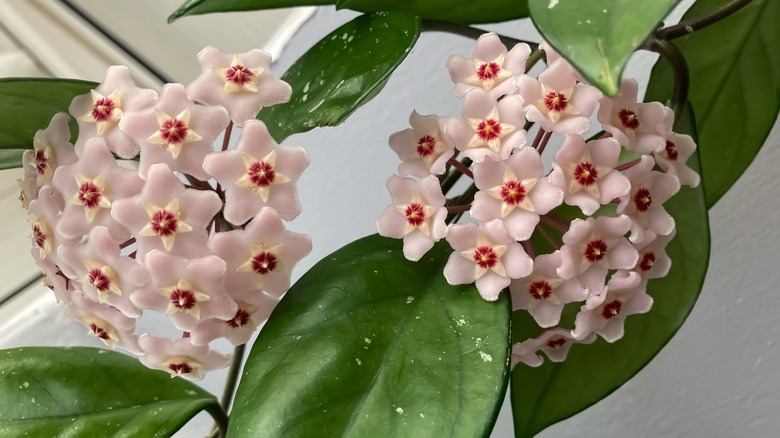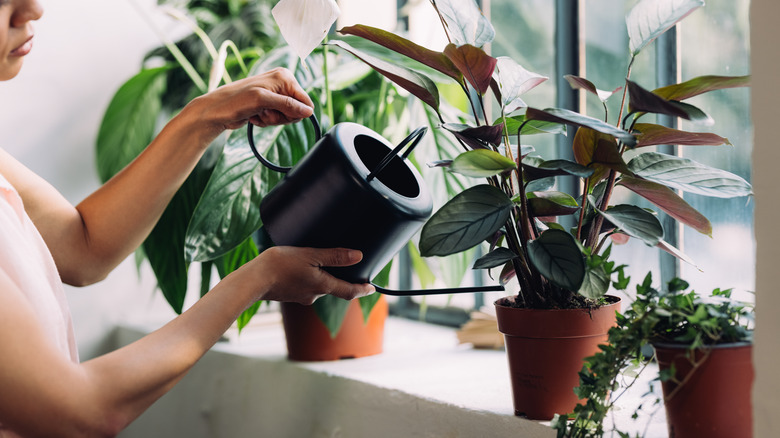Underrated Houseplants You Should Keep An Eye Out For, According To Our Plant Expert
You don't have to have a green thumb to know the unique value of decorating your home with plants. Texture is one of the best ways to elevate your interior design, and plants offer an endless array of textures and colors to add visual interest to any space. The trick is to incorporate plants into your decor rather than just plopping a random ficus atop your coffee table and calling it a day. As well as providing aesthetic value, plant decor is practical, too. Plants absorb toxins and release oxygen into the atmosphere, making for a healthier breathing space. Research also supports that plant life stimulates creativity, so indoor plants are helpful if you work from home.
Knowing this, it's no surprise that plants have become ubiquitous in home decor. But not all plants are created equal! Some of the most popular and common houseplants include names you'll probably recognize, like aloe vera, orchids, lilies, and spider plants, but other underrated varieties are equally fantastic and deserve a little love. Samantha Hermann, houseplant expert and teacher, spoke exclusively with House Digest and shared her top three underrated houseplants you should keep an eye out for: hoyas, plumosa ferns, and Norfolk pines. While they might sound a little more exotic than your typical rosemary or sage, these houseplants are still beginner-friendly, easy to care for, and well worth your time. Plus, they'll differentiate your space from those of other fellow plant lovers!
Getting to know hoyas, plumosa ferns, and Norfolk pines
In case you don't know anything about hoyas, consider this your crash course. A tropical plant, hoyas have waxy, green leaves and grow well in pots or hanging baskets. But as Samantha Hermann exclusively shared with House Digest, their true beauty lies in their blossoms. "Hoyas are often underrated because most people don't see them as they're blooming, and growing a hoya to see its blooms is extremely rewarding," she said. "Most smell amazing as well." Depending on the species, hoya blossoms are either pink or white, and packed in tight, ball-like clusters. Hoyas can also be trained as climbing vines, providing additional options for displaying these green creepers.
The plumosa fern, aka the asparagus fern, is conspicuous by its soft, floofy leaves. "These stunning plants are used in outdoor containers often, but when grown as an indoor plant, they can provide an amazing whimsical feel to your space," Hermann explained. The plumosa fern's wispy, feathery foliage is often used as a filler in floral arrangements. On its own, this houseplant is definitely a conversation starter.
As for Norfolk pines, they're related to the monkey puzzle tree and are not a full-on pine tree. (Think more along the lines of a bonsai tree.) "Often sold around Christmas time for some indoor cheer, these can be grown year-round and become your family Christmas tree! They grow large and prefer a lot of bright light, as they're a tropical tree," Hermann said.
The pros and cons of all three plants
Hoyas, plumosa ferns, and Norfolk pines are all relatively easy to care for. You can even put the plumosa fern into a self-watering pot and (mostly) forget to water it, since it thrives in low-light areas. Likewise, hoyas can fend for themselves. "Hoyas are easy to care for, can thrive in a variety of locations, are pet and people safe, and beginner-friendly," Samantha Hermann exclusively told House Digest. However, hoyas do require a lot of light. They typically need anywhere from 2 to 4 hours of direct sunshine, so you'll want to put this plant near a window that gets lots of light or outside on a porch. As for any potential downsides to owning plumosa ferns, it's a good idea to keep them away from little kids and pets, as Hermann said the berries can sometimes be toxic.
If you own a Norfolk pine, it can be rewarding to watch your miniature tree grow into a large statement plant. Plus, your space will smell like Christmas year-round! But like the plumosa fern, the Norfolk pine is mildly toxic to pets. Hermann noted that it will also require a little bit of extra cleanup since it sheds its pine needles whenever it gets too dry.
Ultimately, whether you spring for more common or underrated houseplants is up to you. The most important thing is that any plant complements your design and brightens up a space.


